In her Own Frank Words…Darcel de Vlugt
Presenting Sophisticated World Class Vision
The northern hemisphere has long since dictated the course and direction of fashion, often ruling runways afar wide. However more recently swathes of colour and aesthetic artisanship from the Antilles region, infused by vibrancy have slowly been making a headway, arousing curiosity and creating a path in this competitive industry. As spring bathes us with it’s bountiful of blooming flowers and a rebirth of ideas it is apt that UKSS took time out to speak to none other than Darcel de Vlugt, the brainchild behind the house of Van Der Vlugt.
Hi Darcel, it seems like it has been a while that you were over shore in London for the London Fashion Week 2013, Waves Rethink Exhibition. Where did you find the inspiration behind your latest collection (the opulent ball gown and pearl embroidered empire-waist Baroque-inspired gown…) presented at the London Fashion Week and what was the reception to your designs like?
VDV: As you mentioned, the inspiration behind my latest work was indeed the Baroque influence. I absolutely loved that it was a trend on the September runways for Spring/Summer 2013 because it represented a change in our thinking towards fashion. The economy everywhere has been in such a slump for such a long time now that everyone has been geared towards spending as little as possible for as much as they can get. Which pretty much eliminates the idea of luxury, quality clothing in the average person’s wardrobe. So, seeing this trend on the runways was like a revolution, or a re-awakening of sorts, telling people: “It’s okay to be luxurious, it’s okay to want to look your best and spend some time and money on you. It’s okay to forget these crappy economic times for a moment and pamper yourself, be extravagant, be over-the-top, treat yourself dammit!” Immediately, I felt inspired and wanted to jump on the trend and create some pieces of my own towards it. I’ve always loved luxury and the red carpet, even if I can’t afford it myself right now! But I can create it, and I love creating it, so why not?!
I recently read somewhere, where you quoted “that you always loved designing runway collections… LOVED the adrenalin rush of creating something new and eye-catching… but you were also starting to seriously love creating something for a client”. Tell us as the wunderkind of Trinidad & Tobago fashion, do you feel the pressure to keep doing amazing collections season after season?
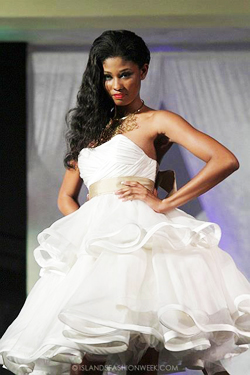 VDV: The Caribbean fashion seasons are a little strange compared to the international fashion scene. Whereas the rest of the world knows of Spring/Summer collections being shown the September before and Autumn/Winter collections being shown the February before, in the Caribbean we have two seasons – wet and dry. Also, financially, most designers can only really produce one major collection a year in time for the region’s biggest fashion shows like Caribbean Fashion Week. Because I am only now really getting into the groove of being a designer on a professional level and no longer just a design graduate showcasing my work, I’m still finding my niche. I’m still coming to terms with the fact that my aesthetic and the Caribbean climate may not always mesh. I already mentioned I love the red carpet, I love extravagance. From a money-making point of view, not many people have the type of events to go to that I would want to create pieces for. So right now, my mind is working to find a way to merge what I do with what the Caribbean needs. I think I may be finding that niche in the bridal arena – we’re a top wedding destination as a region and we still take wedding attire pretty seriously. I love evening and formal wear, so I think this is realistically where I can fit in comfortably without sacrificing my design aesthetic in order to please the masses. It’s one thing for everyone to love that dress I made out of silk organza, but how many people will really fork out that amount of money in the Caribbean for a dress like that, in order for me to survive as an artist and make a living as an individual? So, back to your original question, the pressures I feel are to find that perfect balance between being a designer and giving a client what they want. I do custom-fitted pieces (although I’m looking to recreate a few favourites from previous collections for ready-to-wear). When you get an open-minded client who likes to think outside the box, my mind and their body, which I guess is my canvas, will produce something great.
VDV: The Caribbean fashion seasons are a little strange compared to the international fashion scene. Whereas the rest of the world knows of Spring/Summer collections being shown the September before and Autumn/Winter collections being shown the February before, in the Caribbean we have two seasons – wet and dry. Also, financially, most designers can only really produce one major collection a year in time for the region’s biggest fashion shows like Caribbean Fashion Week. Because I am only now really getting into the groove of being a designer on a professional level and no longer just a design graduate showcasing my work, I’m still finding my niche. I’m still coming to terms with the fact that my aesthetic and the Caribbean climate may not always mesh. I already mentioned I love the red carpet, I love extravagance. From a money-making point of view, not many people have the type of events to go to that I would want to create pieces for. So right now, my mind is working to find a way to merge what I do with what the Caribbean needs. I think I may be finding that niche in the bridal arena – we’re a top wedding destination as a region and we still take wedding attire pretty seriously. I love evening and formal wear, so I think this is realistically where I can fit in comfortably without sacrificing my design aesthetic in order to please the masses. It’s one thing for everyone to love that dress I made out of silk organza, but how many people will really fork out that amount of money in the Caribbean for a dress like that, in order for me to survive as an artist and make a living as an individual? So, back to your original question, the pressures I feel are to find that perfect balance between being a designer and giving a client what they want. I do custom-fitted pieces (although I’m looking to recreate a few favourites from previous collections for ready-to-wear). When you get an open-minded client who likes to think outside the box, my mind and their body, which I guess is my canvas, will produce something great.
What has been your favourite collection designed to date and why?
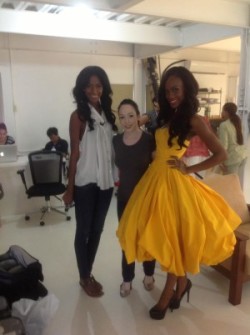 VDV: While I have pieces and outfits that I love individually, my favourite collection (I don’t actually have that many, more mini-collections than anything) has to be the Mad Hatter’s Tea Party collection. It’s the collection that won me the Next Generation Designer Award 2009 at the Islands of the World Fashion Week. I’ll be really honest… I went back to Nassau that year to win. It was my second time, I had been a finalist in every category the first year, right out of university, and I honestly felt inside like I would not be satisfied until I won that damn title. So that collection was really personal to me, the story I concocted in my head just took root and started growing and taking on a life of its own. I needed to make something with what little funds I had, but it had to be cohesive. So the first problem to solve was how do I use lots of different fabrics but tie everything to the same storyline? Because I could only afford a few metres of any one fabric that I wanted to use at the time so I couldn’t carry a single silk across the entire collection, I could only get enough for one outfit. So what tied it all together was the story, the idea of ‘What would happen if the desserts came alive at the Mad Hatter’s tea party?” And boom, the inspiration was born. From there, each outfit embodied a dessert, each girl had a character to play. Then I couldn’t afford shoes for the models (I am always thinking of looks from top to toe, I hate asking models to use their own shoes), so I had to find a way around that. I made flower accessories to decorate their toes and had them walk on their tip toes so that it would look like heels from the front. It was whimsical; it could flop or fly, and everyone just ended up loving it because my models didn’t do the regular runway walk – they were told to walk like puppets or broken dolls, because they weren’t meant to be human. And then I dressed up as the Mad Hatter for my runway walk – the storyline was complete. From top to toe, I put my everything into that collection because I knew I wanted to win and I had to work with what I had. What actually looked like whimsy to the viewer most times was just my solution to a problem that had presented itself. And the yellow dress from that collection cannot catch a break – to this day I still get asked to borrow it for shoots, even though it’s from a collection three years ago! That’s flattering enough.
VDV: While I have pieces and outfits that I love individually, my favourite collection (I don’t actually have that many, more mini-collections than anything) has to be the Mad Hatter’s Tea Party collection. It’s the collection that won me the Next Generation Designer Award 2009 at the Islands of the World Fashion Week. I’ll be really honest… I went back to Nassau that year to win. It was my second time, I had been a finalist in every category the first year, right out of university, and I honestly felt inside like I would not be satisfied until I won that damn title. So that collection was really personal to me, the story I concocted in my head just took root and started growing and taking on a life of its own. I needed to make something with what little funds I had, but it had to be cohesive. So the first problem to solve was how do I use lots of different fabrics but tie everything to the same storyline? Because I could only afford a few metres of any one fabric that I wanted to use at the time so I couldn’t carry a single silk across the entire collection, I could only get enough for one outfit. So what tied it all together was the story, the idea of ‘What would happen if the desserts came alive at the Mad Hatter’s tea party?” And boom, the inspiration was born. From there, each outfit embodied a dessert, each girl had a character to play. Then I couldn’t afford shoes for the models (I am always thinking of looks from top to toe, I hate asking models to use their own shoes), so I had to find a way around that. I made flower accessories to decorate their toes and had them walk on their tip toes so that it would look like heels from the front. It was whimsical; it could flop or fly, and everyone just ended up loving it because my models didn’t do the regular runway walk – they were told to walk like puppets or broken dolls, because they weren’t meant to be human. And then I dressed up as the Mad Hatter for my runway walk – the storyline was complete. From top to toe, I put my everything into that collection because I knew I wanted to win and I had to work with what I had. What actually looked like whimsy to the viewer most times was just my solution to a problem that had presented itself. And the yellow dress from that collection cannot catch a break – to this day I still get asked to borrow it for shoots, even though it’s from a collection three years ago! That’s flattering enough.
The fashion industry is challenging as it is. Where do you draw your inspiration from on a daily basis? And are there any local or international designers that you are watching?
VDV: I don’t like real life and everyday living. That’s why I think some of my pieces are so whimsical. We get so much of humdrum reality on a daily basis that it’s nice to escape and be someone else or try something else for a change. My inspiration comes from the world of fantasy, the world of history, the world of mythology. I grew up in Cyprus so Greek mythology has had a tremendous impact on the way I create. When I was younger, I would read endlessly. I still believe in the magic of a good book – it’s that magic that gives you the ability to imagine as an adult when things aren’t always going your way. I’m also greatly inspired by Old Hollywood glamour and women of the forties and fifties – the pinup girls. Dita Von Teese is one of my style icons – I wish I had the time on my hands to look that put together every day! I think women of that era were just the perfect balance of sensual and sophisticated, talented and driven but also soft and romantic. Their bodies were phenomenal and the silhouettes of the time are just super sexy without being overtly so.
Locally, I love Meiling. But she is more than just a local designer. She is the epitome of what every designer from a small nation should strive for in their career, because that woman has her business hat and her creative hat in sync. She knows her stuff, she isn’t creating for the sake of creating and she is leaving behind a legacy. She’s a superstar and I am happy to have had her as my mentor during my studies. I also am a huge advocate for some of the young, fresh designers who are working quietly behind the scenes but who I know will make their mark when the time is right. The two design graduates from UTT that I came to London with – Lisa See Tai and Mark Eastman – they are so very talented. Delia Alleyne is a pattern queen. There’s so many who I can mention now but they haven’t even produced collections yet, so you wouldn’t know them, but their dedication and hard work will be recognized at some point.
Internationally, I am a huge fan of the Lebanese designers like Elie Saab, Georges Chakra, Abed Mahfouz, Zuhair Murad. I love the Dior of the Galliano era – that man could tell a story! And I love Marchesa. Away from the girly gowns, I am also a Haider Ackermann fan and I love Donna Karan and Carolina Herrera for their signature looks.
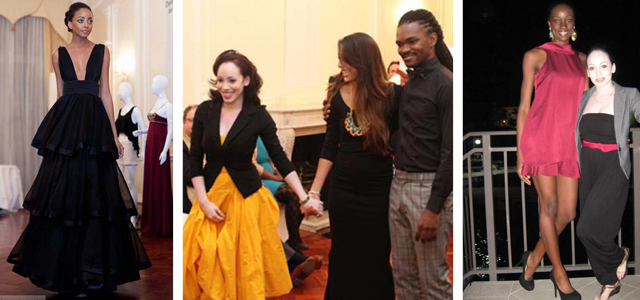
There has been a surge and an interest in Caribbean Fashion. Has this been driven by the connection between Carnival and T&T fashion and what is keeping the momentum going? What other opportunities are available for designers at such a prominent time (carnival).
VDV: I hate to put a damper on it, but I don’t see Carnival and fashion as the same entity in Trinidad. Perhaps that’s the European side speaking, but Carnival just happens to be the time of year that people go out the most, therefore will be seen the most, therefore what they wear will dictate what is in fashion. But a lot of people aren’t necessarily staying ‘in season’ when they make fashion choices at this time, so it’s a bad representation of what designers are currently doing. That being said, there are those designers who cater to that season and are known for their pieces around that time – Anya Ayoung-Chee, Christian Boucaud… more power to those designers for making the most of a viable opportunity to sell their work and be seen. I think a lot of designers here feel that in order to really connect with the people, the best way to do that is to be involved in Carnival as well. I completely understand that thinking because that is our biggest date on the calendar, so a lot of designers blur the lines by designing fashion and designing costumes as well. A lot of it is simply about surviving and making a living when the fashion seasons are down, but every now and there there’s a glimpse of potential that transcends the borders of wearable fashion and costume for parade. Again, this is probably the non-Trini parts of me speaking, but I wholeheartedly love fashion and clothing and Carnival doesn’t need my help – there’s enough Carnival here and the world knows all about it, there’s not enough real fashion in my opinion. Opportunities for designers at this time are abundant, however, as long as you have the right connections – dressing artistes for performances, there’s the Soca Monarch competition which fashion bloggers are now starting to take notice of, the 3Canal show is an amazing production to be part of in any capacity. And then there’s the invaluable experience that costume production does offer, though it’s very stressful.
How important is it for you to see that T&T design and designers are represented fairly in the world of fashion?
VDV: I want the talent here to reach a point where we are no longer defined as ‘Trinidadian’ or ‘Caribbean’ designers. We will simply be designers – we will have earned the title and stand up on an international stage, known to the world by our names, our brands and our work, not just our nationalities. Oscar de la Renta is from the Dominican Republic – nobody calls him a ‘local’ or ‘regional’ designer. That is how important it is for me.
The fashion industry is awash with stereotypes and fickleness. Recently model Chanel Iman spoke out about dealing with racism in the fashion industry and Jordan Dunn was subjected to racism after a white make-up artist refused to work on her face because she was black. Having Vitiligo have you experienced any discrimination or challenges due to the way your skin looks and how have you coped with it, maintaining your confidence and drive to pursue your dreams?
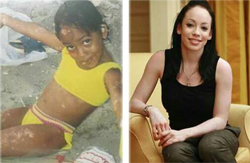 VDV: I deal with discrimination every single day on some level. Once I step outside, I will hear a remark or witness a reaction that makes me uneasy. It’s been this way since I was six or seven and my skin had patches of black and white skin. Back then I was called ‘Spot’, ‘Dalmatian’, a monster, a weirdo… you name it. Today, I’m completely one colour and just the other day I was called a vampire and a bloodsucker. In my own country. That hurts. It hurts even more to sometimes be told I am not a Trinidadian because of how I look. As if anyone can say what a ‘Trini’ looks like! I’ve been lucky enough to have a circle of family and friends who either stick up for me or have shown me how to stick up for myself using wit and humour. Some people are not worth responding to; some you can try to educate and see how you have made a difference; sometimes I’m just not in the mood and a quick witty remark can cut the rudest person down to size. It’s all about assessing the situation and deciding if this is really worth getting upset about right now when I know that tomorrow there will be more of it. I can’t respond to everything and I cannot be upset by everything, otherwise I would have no life. Thank God my mother pushed me to be a part of all sorts of sports teams and drama groups and dance shows that I was forced to overcome any ‘wallflower’-ness I COULD have had and actually make some lifelong friends. I think that being told ‘no’ or put down by others through the way they react to how I looked/look served as a huge motivation for me to succeed. “You say I can’t? Who are you?” That’s the kind of attitude I’ve adopted because I love the adrenalin of proving people wrong. One thing that has pushed me more than anything is telling my story publicly in 2009. It was a release for me to stand up for myself in front of the world, but the aftermath is what I never expected. All of these people I did not know wrote to me or found me somehow to thank me for telling my story, as if I had done something for them. It’s only then I realized how much power one person really has to make a difference – it’s up to us whether that difference is good or bad. A lot of those strangers are still motivation for me to make it and prove that people who look different shouldn’t take a backseat.
VDV: I deal with discrimination every single day on some level. Once I step outside, I will hear a remark or witness a reaction that makes me uneasy. It’s been this way since I was six or seven and my skin had patches of black and white skin. Back then I was called ‘Spot’, ‘Dalmatian’, a monster, a weirdo… you name it. Today, I’m completely one colour and just the other day I was called a vampire and a bloodsucker. In my own country. That hurts. It hurts even more to sometimes be told I am not a Trinidadian because of how I look. As if anyone can say what a ‘Trini’ looks like! I’ve been lucky enough to have a circle of family and friends who either stick up for me or have shown me how to stick up for myself using wit and humour. Some people are not worth responding to; some you can try to educate and see how you have made a difference; sometimes I’m just not in the mood and a quick witty remark can cut the rudest person down to size. It’s all about assessing the situation and deciding if this is really worth getting upset about right now when I know that tomorrow there will be more of it. I can’t respond to everything and I cannot be upset by everything, otherwise I would have no life. Thank God my mother pushed me to be a part of all sorts of sports teams and drama groups and dance shows that I was forced to overcome any ‘wallflower’-ness I COULD have had and actually make some lifelong friends. I think that being told ‘no’ or put down by others through the way they react to how I looked/look served as a huge motivation for me to succeed. “You say I can’t? Who are you?” That’s the kind of attitude I’ve adopted because I love the adrenalin of proving people wrong. One thing that has pushed me more than anything is telling my story publicly in 2009. It was a release for me to stand up for myself in front of the world, but the aftermath is what I never expected. All of these people I did not know wrote to me or found me somehow to thank me for telling my story, as if I had done something for them. It’s only then I realized how much power one person really has to make a difference – it’s up to us whether that difference is good or bad. A lot of those strangers are still motivation for me to make it and prove that people who look different shouldn’t take a backseat.
What is the current state of things in the Fashion Industry in T&T, and are there things that need to change for it to grow and progress?
VDV: Oh wow, that’s a story in and of itself! Without getting into the nitty gritty there is a lot of ego in our local industry that has damaged our potential to be taken seriously on a worldwide stage. Bad productions, broken promises, lack of support and funding, lack of opportunity, false information, unfair payment… there’s a lot to say. One thing that definitely needs to change is the mentality of the entire nation towards fashion – people need to understand what a serious multi-billion dollar industry this is and what that could mean for our economy if we actually start showing the support to our local talent and giving the creatives the credit, payment and treatment they deserve. Everyone wants a quality product, but they want it for free – very few people understand what goes into creating something and going out of pocket for a collection. This is why I am opting out of doing any local fashion shows for a while, unless it is my own brand’s show. For me right now this is a business; it’s no longer about showing a few pieces on a runway and have people who are never going come for a consultation or fitting gush about how pretty it looked. The days for that are done. We as designers need to become business people.
In this day and age, our women are becoming increasingly busy, juggling at times careers, families or a business. For the aspiring, busy woman intent on maintaining her look in a time sensitive world, what do you recommend as a staple wardrobe necessity?
VDV: There are some things that will never go out of fashion. Separates are key for interchangeable outfits and variety. Must-have items are a crisp shirt – white is good; a good tailored blazer – can’t go wrong with black; a pencil skirt – sexy yet professional, a great transitional piece; and I cannot live without denim. Despite the fact that I don’t design any jeans, they are a huge part of my wardrobe – that and blazers. It works well for semi-professional meetings in this kind of climate!
How can Caribbean women express their uniqueness, and how can they use their style to express confidence whilst maintaining subtle sexiness?
VDV: I’d like to drop the word ‘Caribbean’ and focus on the ‘woman’ in that question, because I truly believe that Caribbean people have an essence about them that is undeniable and irreplaceable. Caribbean pride is very strong. I think that a woman should aim to dress comfortably when looking to be stylish – you should wear your outfit and never let your outfit wear you. Tugging, pulling, fixing items of clothing does not go unnoticed and it reads as being unsure of oneself. Posture and gait are more important than an outfit – hold your head high and wear your outfit like it was made for you, and no one will question your choices or your confidence. And always, always, put style before a fashion trend – fashion trends die.
What is next for the Van der Vlugt brand and fashion house in 2013?
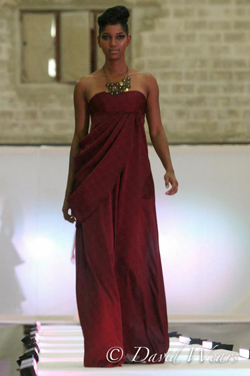 VDV: I am making a move into bridal and should be having my first Van der Vlugt show at the end of 2013. I think it’s a shame that for such a highly sought after wedding destination, so many brides choose to go to New York or Miami to buy off-the-rack dresses, when they should have the option of a go-to designer when it comes to bridal. I’d like to eventually be the name that comes to mind when a woman gets engaged or married in the Caribbean.
VDV: I am making a move into bridal and should be having my first Van der Vlugt show at the end of 2013. I think it’s a shame that for such a highly sought after wedding destination, so many brides choose to go to New York or Miami to buy off-the-rack dresses, when they should have the option of a go-to designer when it comes to bridal. I’d like to eventually be the name that comes to mind when a woman gets engaged or married in the Caribbean.
PS: last but not least, do you consider celebrities such as Nicki Minaj and Rihanna fashion designers, what are your thoughts on the fashion world and public bestowing such a title upon them?
VDV: No, I don’t. While they may have some say in the lines that are produced under their names, the truth is that they themselves aren’t really buying or wearing those clothes, which are watered down versions of the luxurious pieces by other designers that they are wearing. But more power to them for making their money and expanding their empires – I just wish they’d stick to what they know. It makes it a lot harder for those designers who spent years in college or behind a sewing machine learning the basics and applying the knowledge and who have the raw talent to be remembered, if only they could get their foot in the door. But then again, it does give us more motivation to succeed now, doesn’t it?
About: Darcel de Vlugt is a graduate of the London College of Fashion, winner of the 2009 Next Generation Designer Award from the Islands of the World Fashion Week in Nassau, Bahamas and an alumni of the London College of Fashion. Drawing on her life of travel (she has lived in Israel, Syria, Cyprus and the UK to name a few) for inspiration she has and continues to design all of her pieces herself from concept to execution. Her third collection was released in May 2012 and also showcased at Islands of the World Fashion Week.


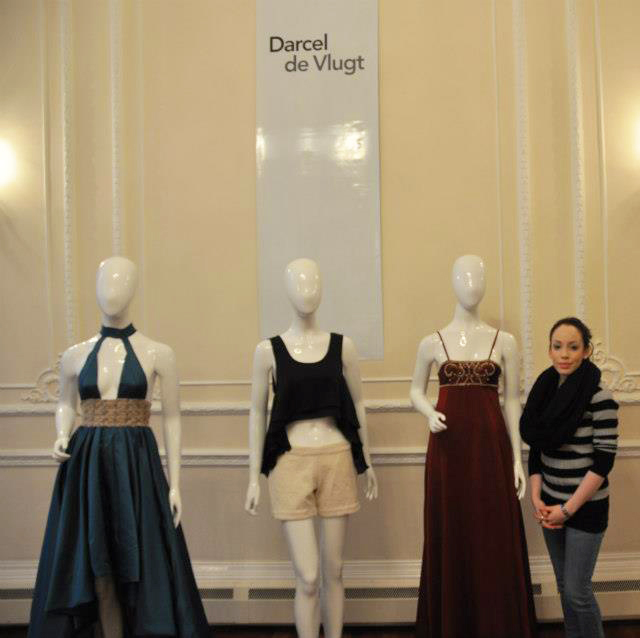

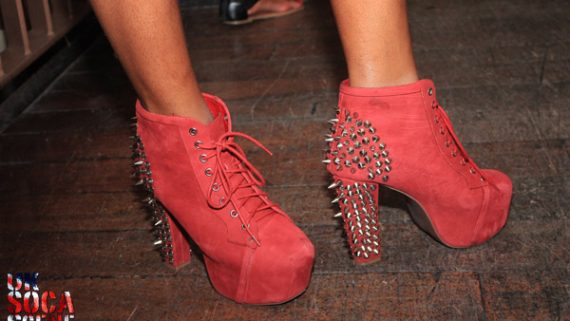


Comments
No comment yet.